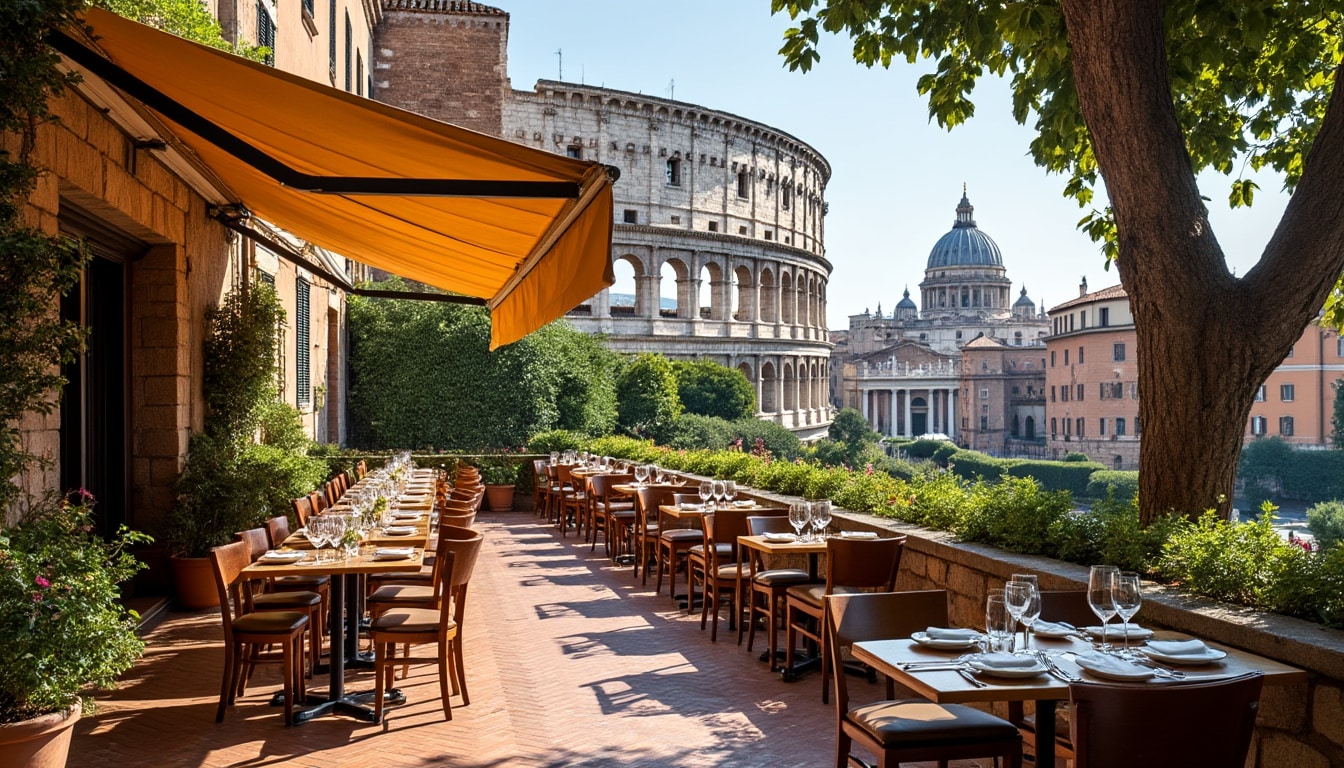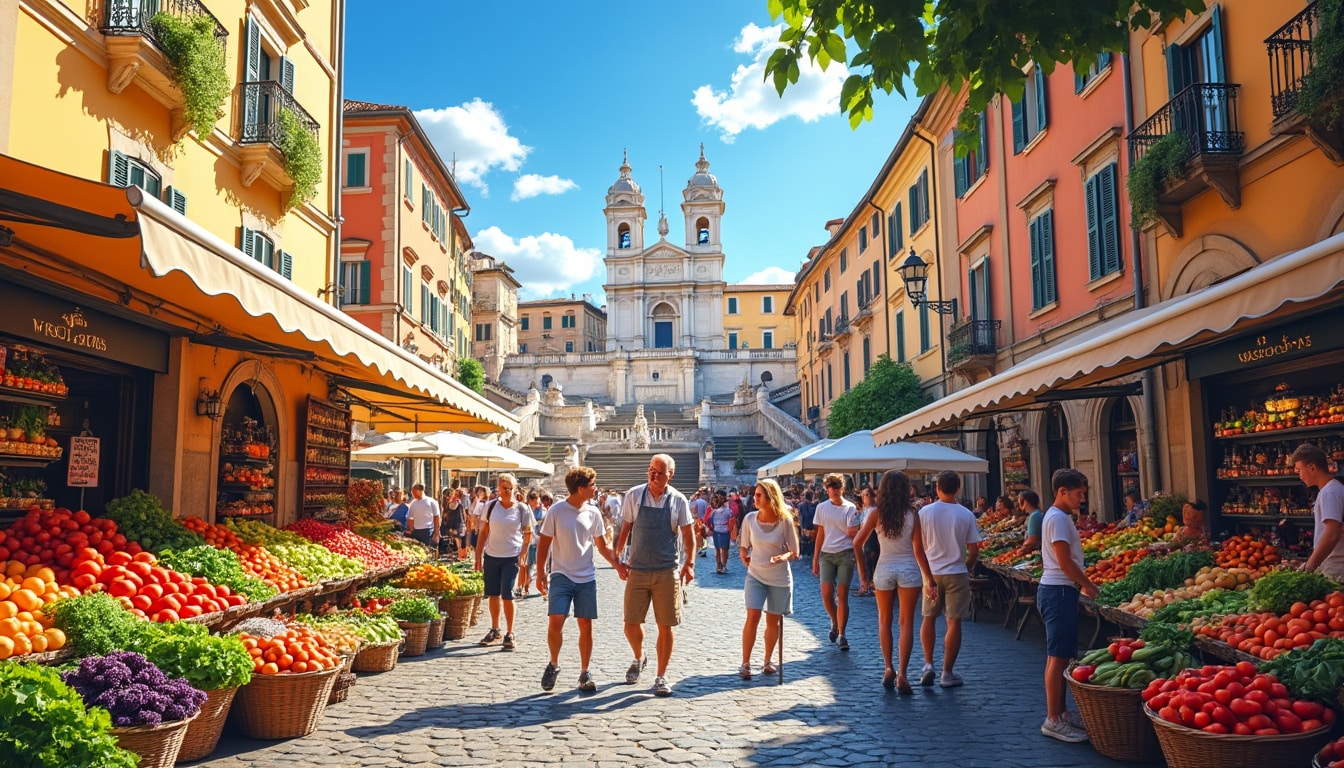Rome, an eternal city known for its history, vibrancy, and mouthwatering cuisine, is equally beloved for its unique shopping experiences and unparalleled sightseeing. However, navigating Rome financially—whether as a visitor or a resident—requires some understanding of current prices, from savory dishes to convenient transportation options. This article breaks down the costs associated with living in or traveling to this splendid city, providing practical insights and tips. Everything from dining at celebrated restaurants like La Pergola to sipping coffee at a local bar has been factored into this comprehensive guide.
Cost of Dining Out in Rome 2025: From Gelato to Gourmet
Eating out in Rome offers a spectacular array of options, from humble pizza al taglio (slice pizza) to exquisite Italian dining experiences. Understanding the cost of dining in this city can help immensely in budget planning.
At local trattorias like Trattoria Da Enzo, meals for two people cost between €30 to €70 for a midpriced dining experience. A more luxurious dinner at an esteemed venue such as La Pergola could range from €50 to €150 for two, depending on the choice of menu and wine. While such dining can be on the pricier side, it often includes a breathtaking view of the cityscape, enhancing the dining experience.
For meals on the go, the cost is more economical. A slice of pizza ranges from €3 to €4, while a typical panini costs €4 to €6. Moreover, enjoying a cup of coffee at a bar will set you back between €0.80 to €3, depending on your order. Those fond of gelato might find themselves spending anywhere from €1.50 to €4, an inexpensive treat for an afternoon stroll.

Several dining approaches are evident. You could partake in a traditional Roman breakfast of cappuccino and cornetto for about €2.20, enjoy a lunch special comprising pasta and juice in a modest restaurant around Rome for €14 to €18, or opt for “aperitivo” deals—a quintessentially Italian kind of happy hour—in various establishments, offering drink+savory snacks usually for €10.
Price variations are largely attributed to location, type of establishment, and the inclusion of drinks such as house wine, which is priced between €2 to €3.50 per glass.
Exploring Rome’s Vibrant Markets and Shopping for Essentials
Shopping in Rome is as diverse as the city itself. Take a stroll through Mercato di Testaccio, renowned for its fresh produce. Essentials vary in price, reflecting Rome’s mix of local culture and international influence.
Items such as bread and other staples are moderately priced. For instance, a loaf of fresh white bread typically costs between €1.30 and €3, while a kilo of apples ranges from €1.50 to €2.50. With local cheese priced at approximately €10 to €15 per kilogram and rice around €1.60 to €3.20, one can savor authentic Italian tastes at home.
Here’s a quick list of some staple grocery prices:
- 🍎 Apples (1 kg) – €1.50-€2.50
- 🥔 Potatoes (1 kg) – €1-€2
- 🥛 Milk (1 litre) – €1.50-€2
- 🍷 Wine (0.75 bottle) – €5-€8
- 🥖 Bread (500gr) – €1.30-€2.50
Shopping at local markets not only supports small businesses but also offers fresher ingredients. Supermarkets in central Rome, meanwhile, may charge slightly more, so personal preferences and shopping habits will ultimately decide expenditure.
Transportation Options and Costs in Rome
Rome’s transport infrastructure is comprehensive, offering a mix of metros, buses, and trams. Understanding the costs allows for seamless exploration of the ancient city while sticking to a budget.
For those opting to roam around the city using public transport, a one-way ticket costs €1.50, valid for 75 minutes on buses or trams. In contrast, frequent travelers may find a monthly pass a better deal at €35.
If convenience is a priority, taxis provide a reliable service. The initial tariff starts from €4.50, varying depending on distance, traffic, and luggage. A journey from the well-connected Fiumicino Airport ranges from €35-€48 by taxi.
Adventure seekers might enjoy renting an e-bike for €25-€30 for 24 hours, allowing unrestricted exploration. Alternatively, a rental car for three days starts at €70, fitting those who prefer self-direction.
The table below details transportation prices:
| Transport Type | Price (€) |
|---|---|
| One-Way Ticket | 1.50 |
| Daily Pass | 6.00 |
| Monthly Pass | 35.00 |
| Taxi 1 km | 1.10-1.50 |
| Bike Rental (24 hours) | 12-15 |
Living Arrangements and Accommodation Costs in Rome
Finding a place to stay or reside in Rome means understanding the real estate market, dominated by variability based on location, luxury, and amenities. From hostels to Rome Business Class luxury hotels such as those found in the Monti area, options are diverse.
A two-star hotel starts at €65 per night, scaling up to €250 or more for premium five-star accommodations. Meanwhile, renting an apartment offers an alternative, with prices around €55 to €100 per night in central Rome.
For a longer stay or for those moving to the city, monthly rent prices differentiate significantly by area. A one-bedroom apartment in the city center can be as steep as €1,200 per month, decreasing by almost 25% when situated outside the center.
The potential to acquire property exists as well, where prices per square meter in central Rome reach €6,000 to €10,000, encouraging careful financial consideration. The opportunity for long-term financial planning is necessary for those aiming to bed down in this historic metropolis.
Key accommodation prices include:
- 🏨 2-star hotel: starting from €65
- 🏨 5-star hotel: starting from €250
- 🏡 1-bedroom apartment in city: €1,000-€1,700/month
Entertainment Costs: Museums, Attractions, and Nightlife in Rome
Rome isn’t just for the day wanderer. Nightlife and cultural experiences abound, and understanding entry fees allows for comprehensive itinerary planning.
The renowned Colosseum is open to visitors from €16, while the opulence of the Vatican Museum also starts at €16. Other sites, including Castel Sant’Angelo and Borghese Museum, have entry fees of €14.50 and €11, respectively. Antico Arco and Gelateria dei Gracchi offer culinary delights for post-excursion relaxation.
For evening entertainment, a typical movie ticket costs about €10, while theater performances range from €20 to €50. Clubs in the city might charge an entrance fee between €10-€20, usually inclusive of a cocktail for initial refreshment.
The following offers a quick view of cultural costs:
| Attraction/Activity | Entry Fee (€) |
|---|---|
| Colosseum | 16.00 |
| Vatican Museum | 16.00 |
| Cinema Ticket | 8-10 |
| Theatre Ticket | 20-50 |
| Night Club Entrance | 10-20 |
Rome presents a tableau of choice, promising something for every budget. Whether visiting for the ancient history or the vibrant modernity, effective budget planning enhances the experience to ensure a spectacular and truly Roman holiday.
Frequently Asked Questions
Here are commonly asked questions about prices in Rome:
- ❓ What’s the cheapest time to visit Rome?
➡️ The cheapest time to visit Rome usually spans from late fall to early spring, excluding major holidays, when tourist numbers significantly decrease. - ❓ How should I budget for a family of four in Rome?
➡️ Plan for accommodation, meals, transport, and entry tickets, while also considering unexpected expenses, possibly guided by budget travel advice from Rome Circuit. - ❓ Are dining prices higher during peak tourist seasons?
➡️ Yes, dining establishments hike prices during peak seasons, particularly at popular tourist spots; avoid these to conserve budget. - ❓ Can I use credit cards widely in Rome?
➡️ Credit cards are often widely accepted, but verify with individual vendors, as outlined in Rome’s currency and payment practices.

